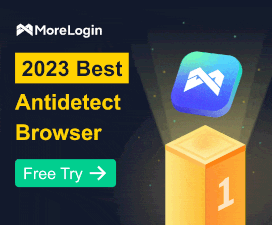Re: Ecommerce Site SEO Starter Info
Shriramsevak,
Welcome to the forum.

Heads Up = Long Post!

@Nytshade -- This isn't a full course, but it could help as starter info...

A. KEYWORD TARGETING
1. Separate your exact match and long tail keywords into 3 lists. These are:
• Generic Keywords -- You'll use this at least 50% to 60% of the time for your onsite and offsite content, as well as for your internal and external link anchors in your onsite content, and for your backlink anchors in your offsite content;
• Branded Keywords -- You'll use this at least 25% to 35% of the time for your onsite and offsite content, as well as for your internal and external link anchors in your onsite content, and for your backlink anchors in your offsite content; and
• Commercial Keywords -- You'll use this at least 15% to 25% of the time for your onsite and offsite content, as well as for your internal and external link anchors in your onsite content, and for your backlink anchors in your offsite content...
2. Separate these keywords into two lists. These are:
• Primary Keyword List -- These keywords should be used for your homepage, for your product category links in your homepage, for your inner product pages, for your deep product reviews, for your internal link anchors, and for your external link anchors; and
• Secondary Keyword List -- These keywords should be used for your offsite content and for your backlink anchors...
B. ONSITE SEO FOR ECOMMERCE SITES
NOTE: When doing the things below, keep in mind the keyword targeting and placement strategies that I mentioned earlier...
1. Information Structure, Website Structure and Internal Link Structure -- Your homepage should have internal links that point to your product category pages. Your product category pages should have links that point to your product pages. Your product pages should have links that point to your product review pages. Your product review pages should have internal links that point to your homepage, your other relevant product category pages, your other relevant product pages, your other relevant deep product reviews, as well as external links that point to relevant authority sites...
2. Fresh Content -- In your homepage, your theme should show recently added products with links pointing to the product category pages, to the inner product pages for these new products, and to the deep product reviews of these new products...
3. Diverse Content -- Include images / photos and videos that will improve the overall presentation value of your onsite content for your target customers...
4. Written Content -- Provide unique written content for your product category pages, for your inner product pages and for your deep product reviews...
5. Boost Onsite Content Indexing -- Create an XML sitemap, a Google Video sitemap, a Google Image sitemap and other relevant sitemap types for your ecommerce site. Then, submit these sitemaps via the Sitemap Submission function in Google Webmaster Tools. Next, generate a Crawl Errors report in Google Webmaster Tools from time to time. Then, use the Fetch As Google function in Google Webmaster Tools from time to time. Next, make sure that your new onsite content is always included in your sitemaps. Then, re-submit your updated sitemaps to Google Webmaster Tools. Next, repeat this process. Also submit your sitemaps to Bing...
NOTE: If you don't know how to properly create sitemaps, then I recommend the Microsys A1 Sitemap Generator. This is a Windows software that you can use to generate sitemaps of various types for your ecommerce site (among other types of sites)...
C. OFFSITE SEO FOR ECOMMERCE SITES
1. List of Offsite Content and Backlink Placement Targets -- Use your secondary keywords in Google so as to identify heavily trafficked, laterally and directly relevant niche-authority sites (as well as inner Web 2.0 pages of those sites). Use the Moz Open Site Explorer (OSE) to pinpoint sites and inner pages with decent to excellent DA (Domain Authority) and PA (Page Authority). Develop a list of offsite content and backlink placement targets, which can be around 70% to 80% dofollow and around 20% to 30% nofollow, and around 70% to 80% high DA / PA and around 20% to 30% lower to mid DA / PA...
2. Placement of Offsite Content and Backlinks -- Regularly participate and initiate relevant discussions in your targets. Share your onsite content and try to place backlinks in your targets. Use your secondary keywords as anchors of these backlinks. Point your backlinks around 60% of the time to your homepage, around 10% of the time to your relevant product category pages and around 30% of the time to your relevant inner product pages and deep product reviews -- You can also directly contact the owners / admins / Webmasters of those sites for possible mutually beneficial guest posting arrangements, content syndication agreements and ad banner / text link / advert / mailing list ad placement deals. They'd most likely be responsive to your offers due to your frequent participation in their sites, because you'd be a familiar name to them when you contact them...

D. ADDITIONAL TRAFFIC GENERATION and MAILING LIST BUILDING IDEAS
1. Video Marketing -- This works well for ecommerce sites. The highest Youtube earner last year (2014) is someone with videos that show her opening Disney toy packages. This example alone shows videos with high commercial value can hit it big in Youtube. Now, imagine if you create videos of your products, upload those videos to Youtube and to Dailymotion among other wildly popular video hosting sites, SE and human viewer optimize your videos, embed your videos into your inner product pages and deep product reviews, SE and human viewer optimize those inner product pages and deep product reviews, entice others to embed and share your videos and posts with video embeds and so on...
2. Mailing List Building -- An incentivized opt-in offer in conjunction with video marketing works well for ecommerce sites. Generate ideas for your incentivized opt-in offer by browsing the cover stories and feature articles in recent issues of wildly popular, best selling offline magazines in your target countries, which should of course be relevant to your target audience. There are reasons why those offline magazines are selling crazy, especially since online publications give them good reasons not to, and some of those main reasons are the attention-grabbing, enticing and compelling attributes of those cover stories and feature articles...
Well, that's all for now. Cheers!










